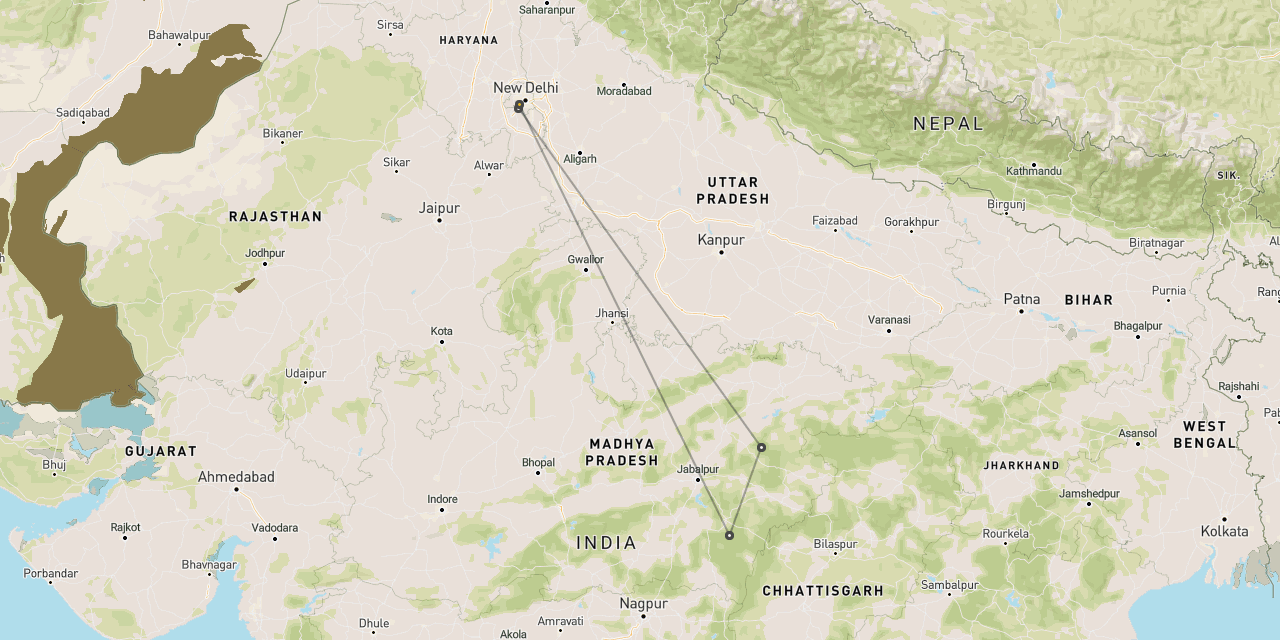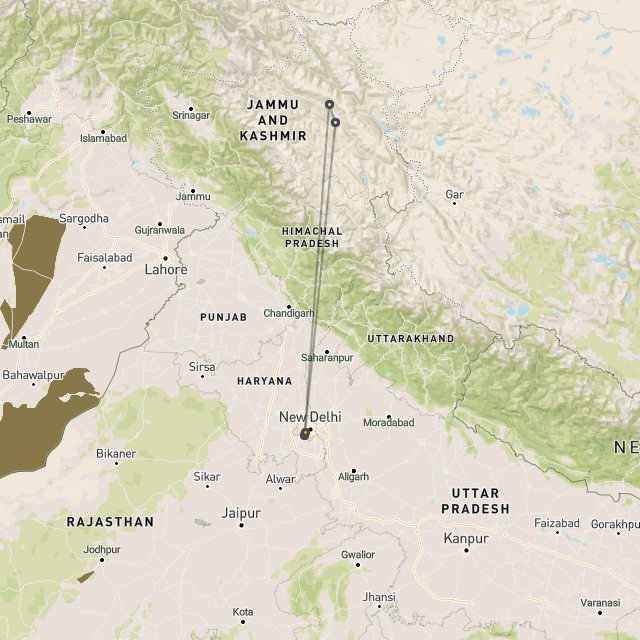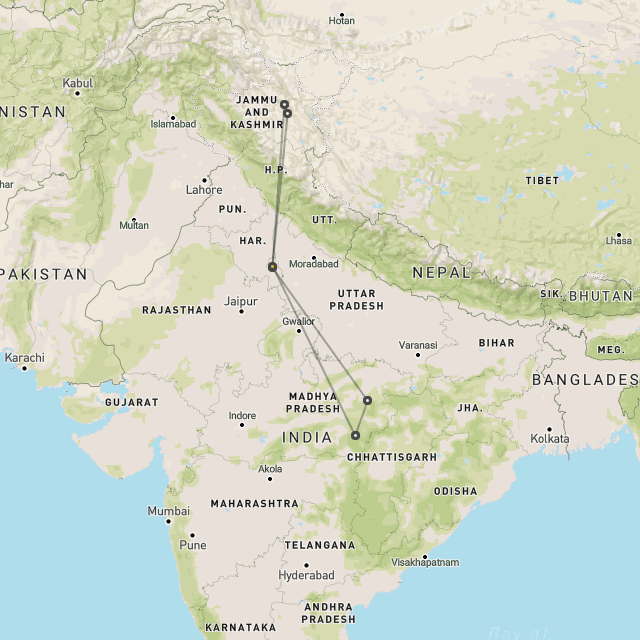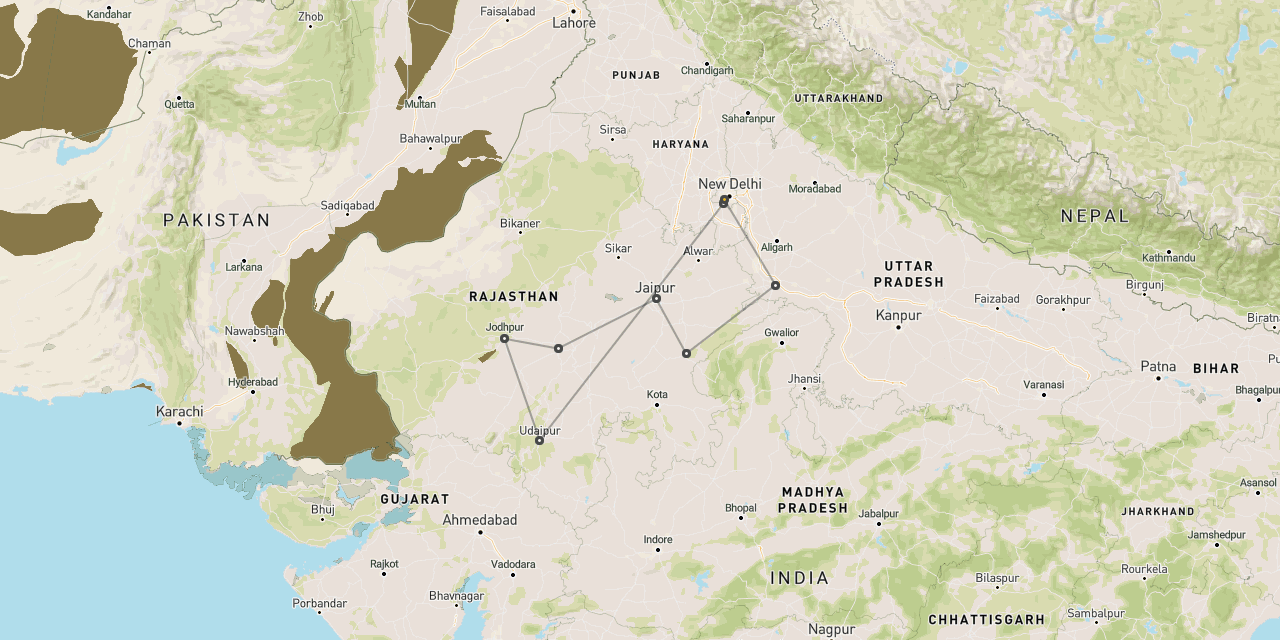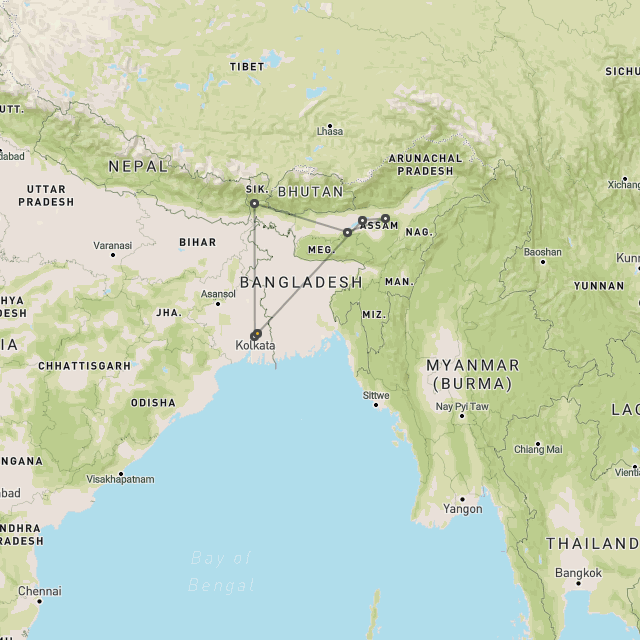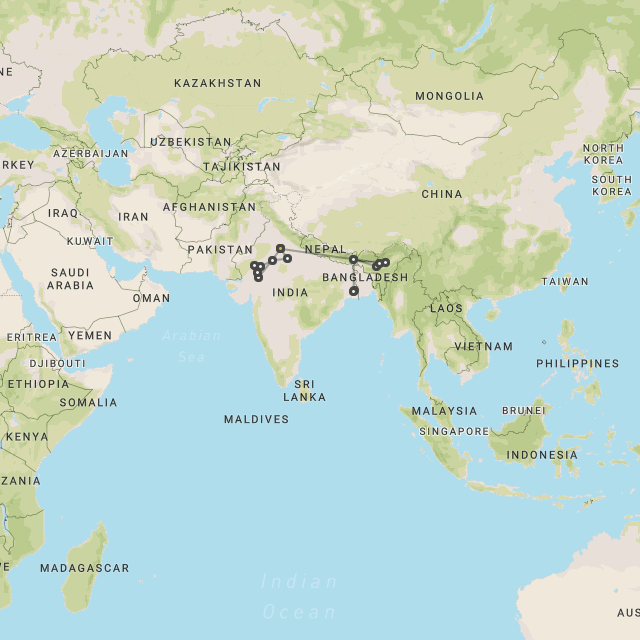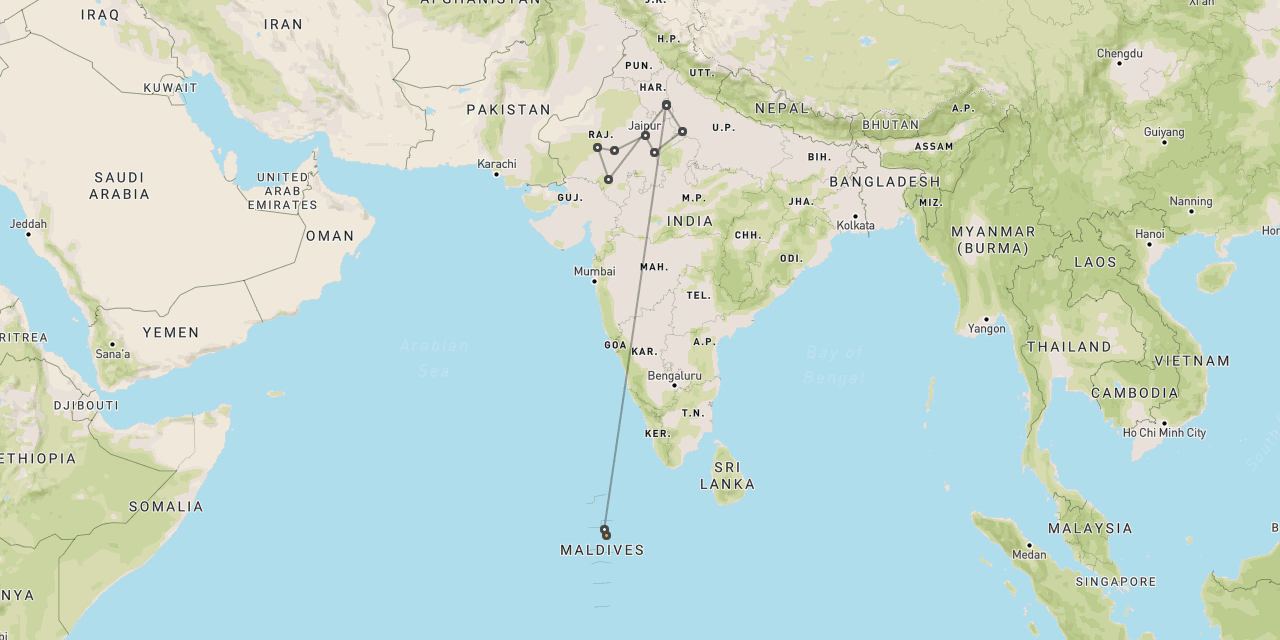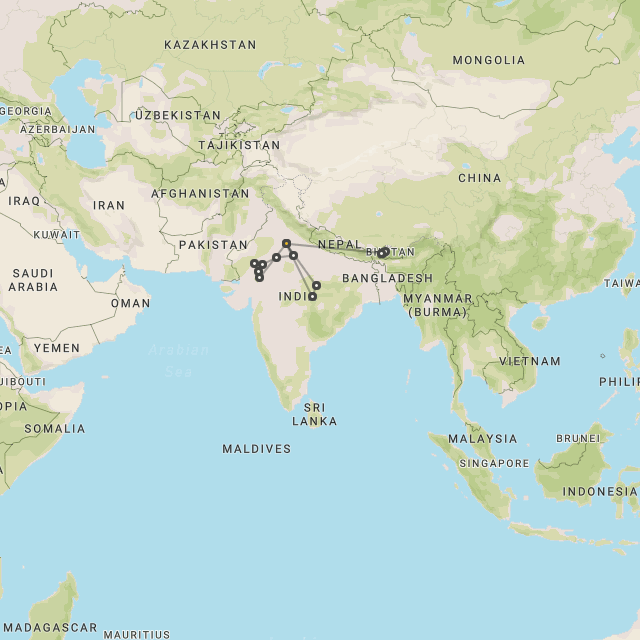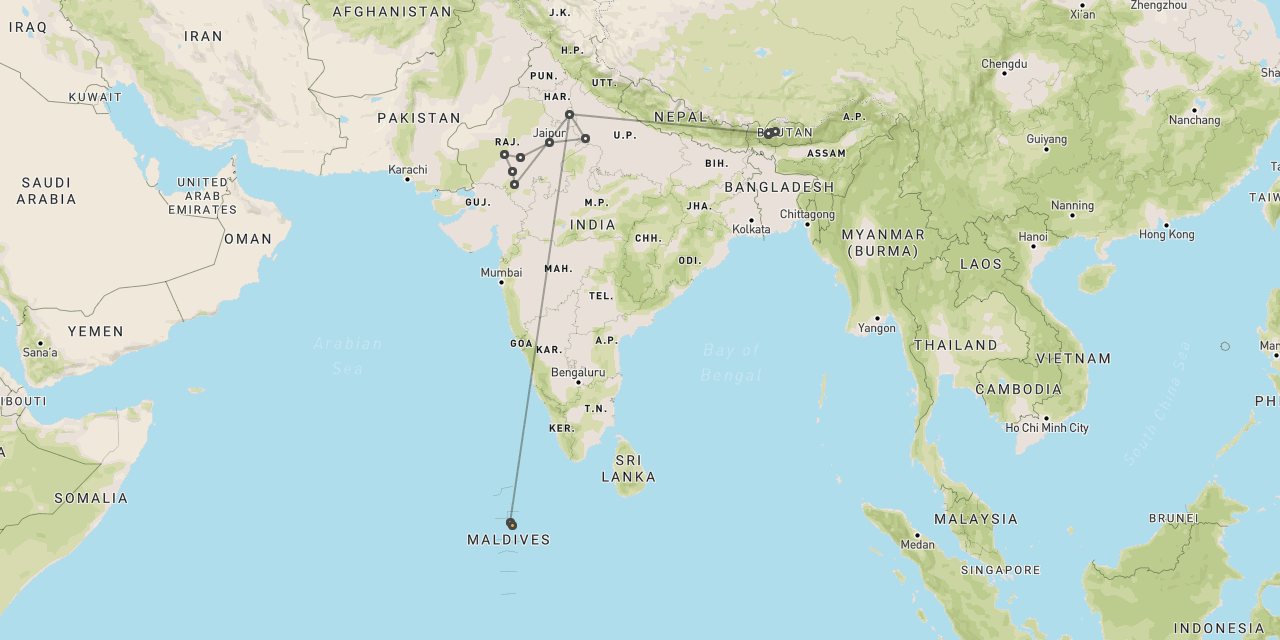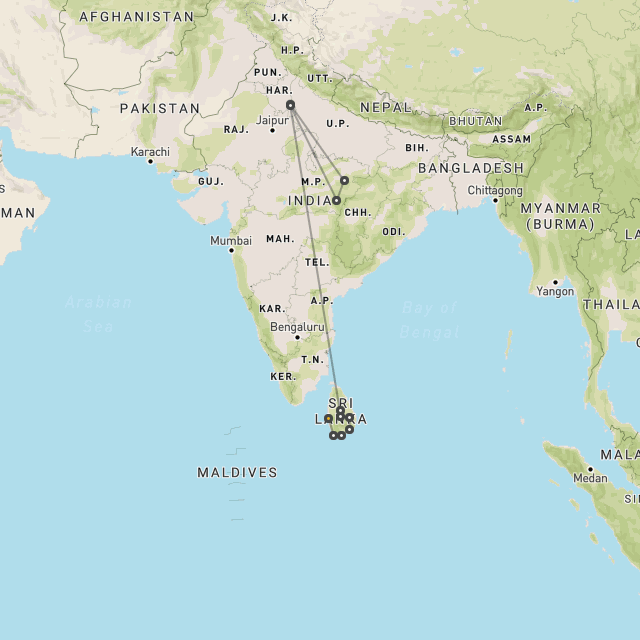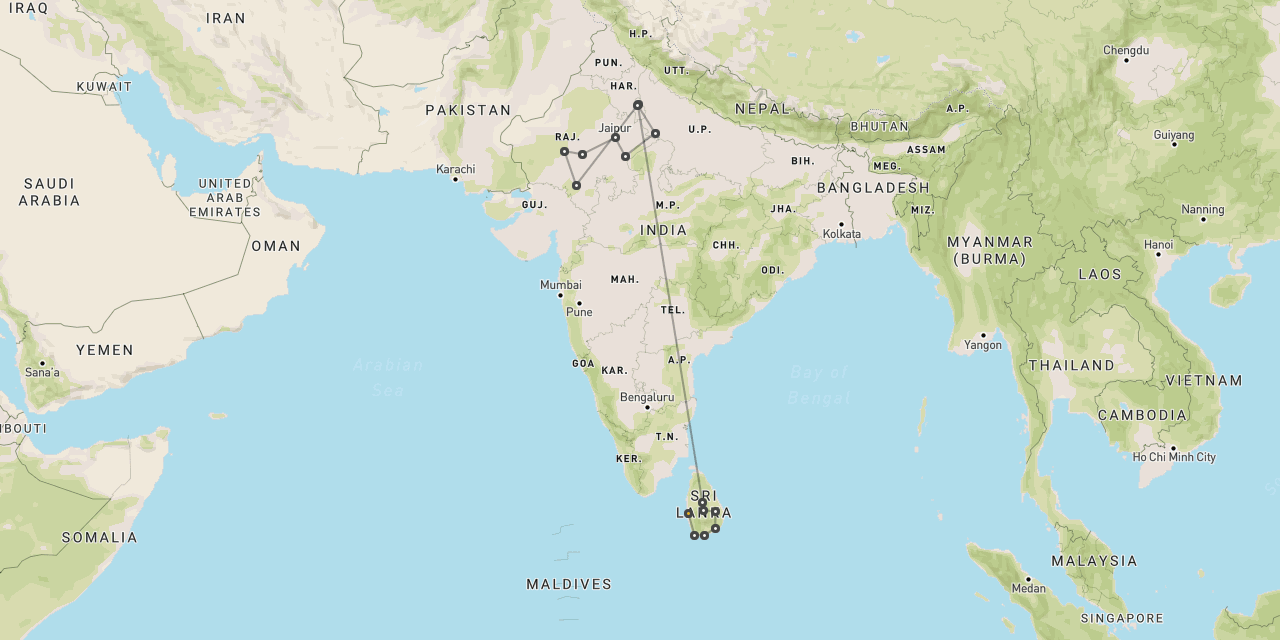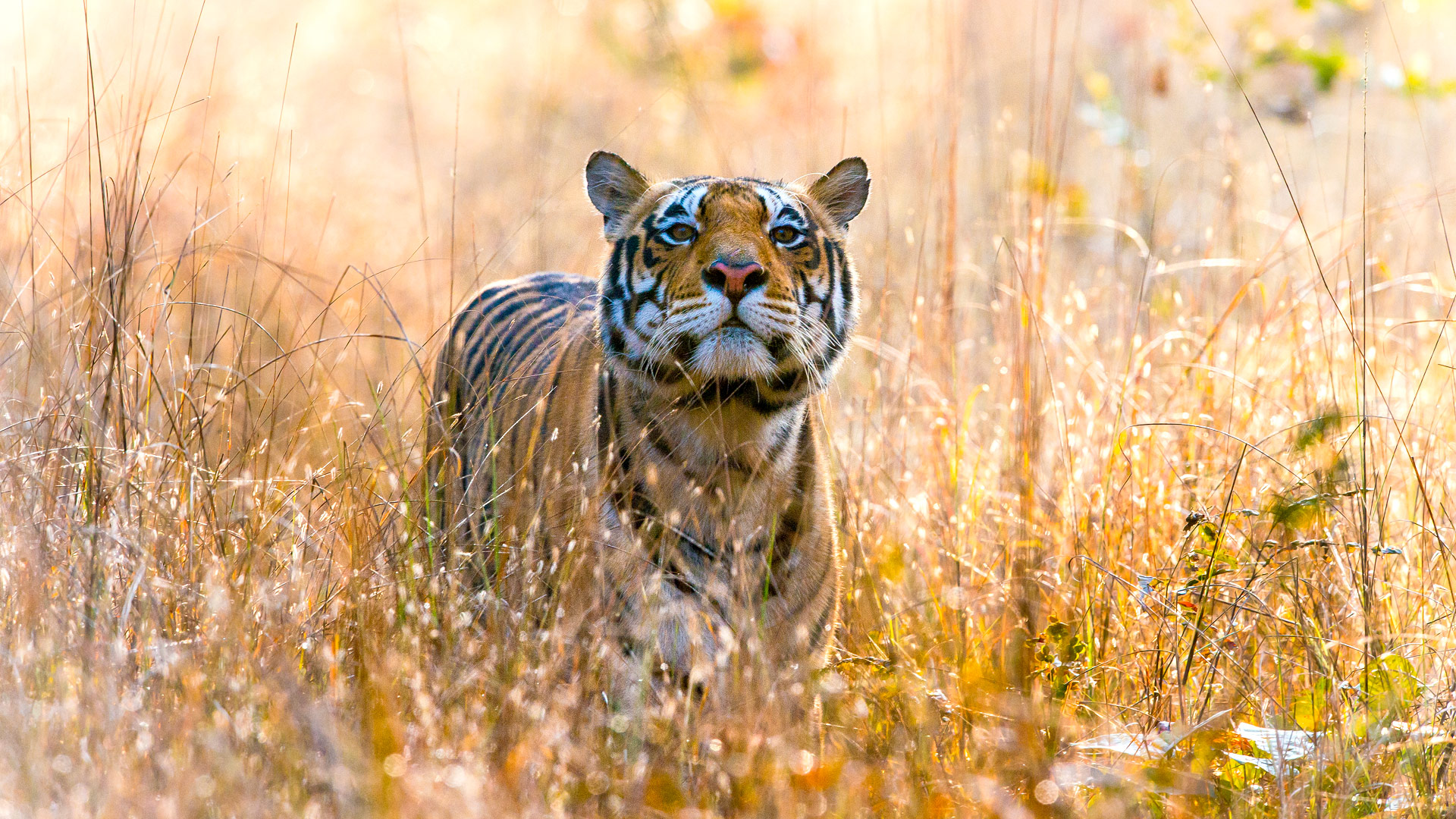
Safari to Kanha
Kanha
is the arguably the best
tiger reserve in India
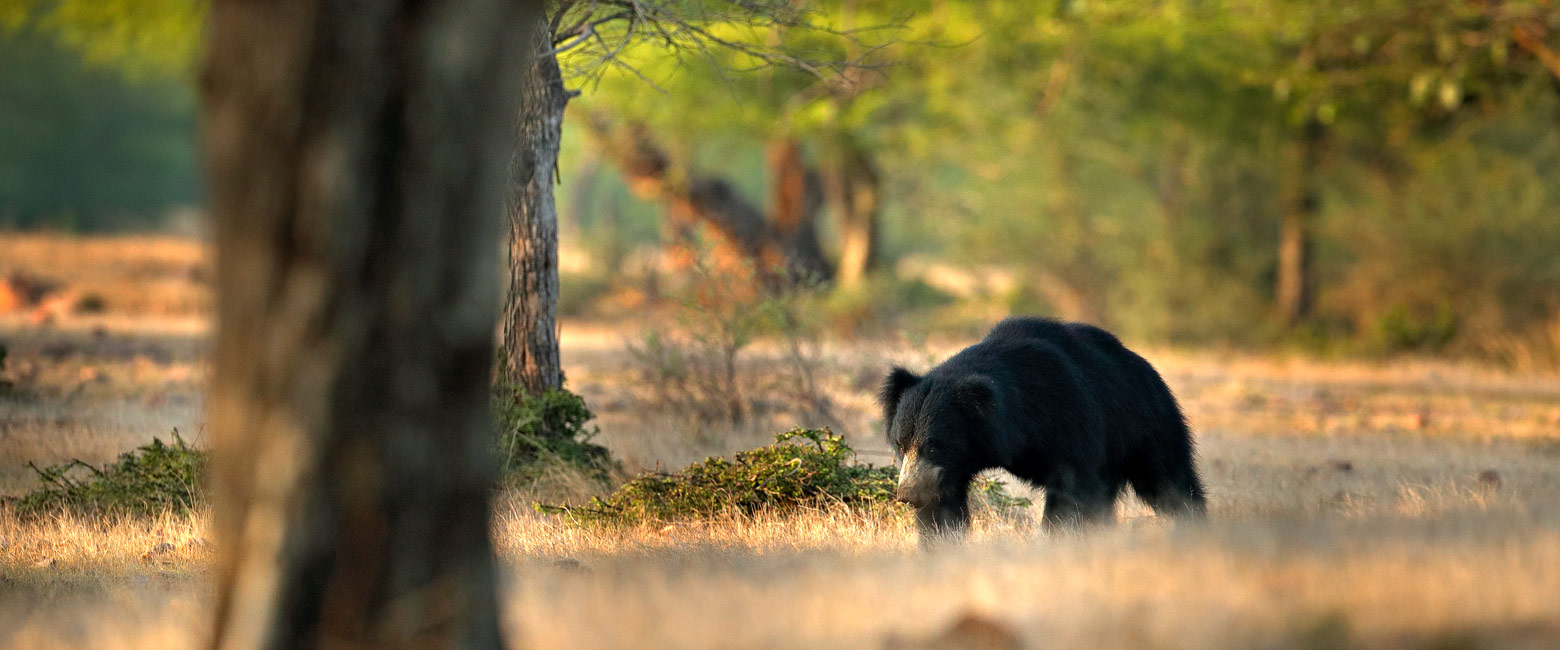
the primary setting for The Jungle Book
Kanha National Park is located in the southwest corner of Madhya Pradesh in Central India, roughly 800 km (500 miles) from New Delhi, Mumbai and Kolkata.
Originally established as a wildlife sanctuary in 1933, the Kanha Tiger Reserve was established in its present form in 1974 and now extends over a relatively modest 940 sq km (360 sq miles). However, when you include the surrounding buffer zone of 1067 sq km (412 sq mi) and the neighbouring Phen Sanctuary of 110 sq km (42 sq mi), it all adds up to one of the largest conservation areas in India.
This beautiful reserve is said to have been the setting for Rudyard Kipling’s ‘The Jungle Book’ and some of the lower cost lodges in the area bear the name of famous characters like Baloo and Mowgli. It was certainly the setting for many of the famous elephant-back tiger hunts of the Victorian era.
The reserve consists of dry deciduous lowland forest, interspersed with scenic meadows, centred on a horseshoe-shaped valley through which meanders the Surpan River.
More elevated areas are mainly covered by moist deciduous forests (including Indian ghost trees), with patches of bamboo on the slopes. It contains over 1000 species of flowering plants.
Kanha is best known for its tiger population. This is reckoned to be one of the most reliable places to find and observe these usually very elusive creatures.
Although the national park is best known for tigers, it also contains a wide range of wildlife, with predators including Indian leopards, jungle cats, desert cats, striped hyenas, jackals, foxes, dholes (Asian wild dogs), mongooses and sloth bears.
Prey species include wild boars, rare barasinghas (swamp deers), gaurs, sambar deers, chital deers, muntjacs (barking deers) and blackbucks. Primates include southern plains gray langurs and rhesus macaques.
The reserve is also home to over 300 species of birds, including black ibises, bee-eaters, cattle egrets, blossom-headed parakeets, pond herons, drongos, common teals, crested serpent eagles, grey hornbills, Indian rollers, lesser adjutants, little grebes, lesser whistling teals, minivets, Malabar pied hornbills, woodpeckers, pigeons, paradise flycatchers, mynas, Indian peafowls, red junglefowls, red-wattled lapwings, steppe eagles, Tickell’s blue flycatchers, white-eyed buzzards, white-breasted kingfishers, white-browed fantails, wood shrikes, warblers, and vultures.
The reserve is divided into four zones, Kanha, Kisli, Sarai and Mukki. The Kanha Zone is generally considered to be the premium area, since the wildlife is more accustomed to vehicles and therefore more relaxed and visible. But this is also the most busy area, with the potential for unsightly vehicle clustering on major sightings. It’s usually best to spread your time across multiple zones.
The reserve has long-since been plagued by controversy, with the apparently ongoing forced eviction of members of the semi-nomadic forest-dwelling Baiga tribe in order to make space for tigers and other wildlife.
The primary activity here is vehicle safari inside the reserve, which is tightly controlled and largely operated by the park authorities. We will always do everything we can to make sure that you get the best access to the reserve, including access to as many sectors and for as many hours as possible.
In common with most tiger reserves, scouts go out early morning on elephants, in search of these elusive big cats. If they get a sighting, then they report this to the vehicle drivers. If you are first to arrive on the scene, then it may be possible to ride one of these elephants a short distance to view the sighting. Other than this, elephant-back safaris are no longer offered.
Kanha is the best known and most-visited tiger reserve in Madhya Pradesh. Vehicle traffic inside the reserve during high season can be unpleasantly high, with serious clustering around major sightings. Traffic avoidance measures are strongly advised.
The reserve, in common with all in Madhya Pradesh, is closed on Wednesday afternoons.
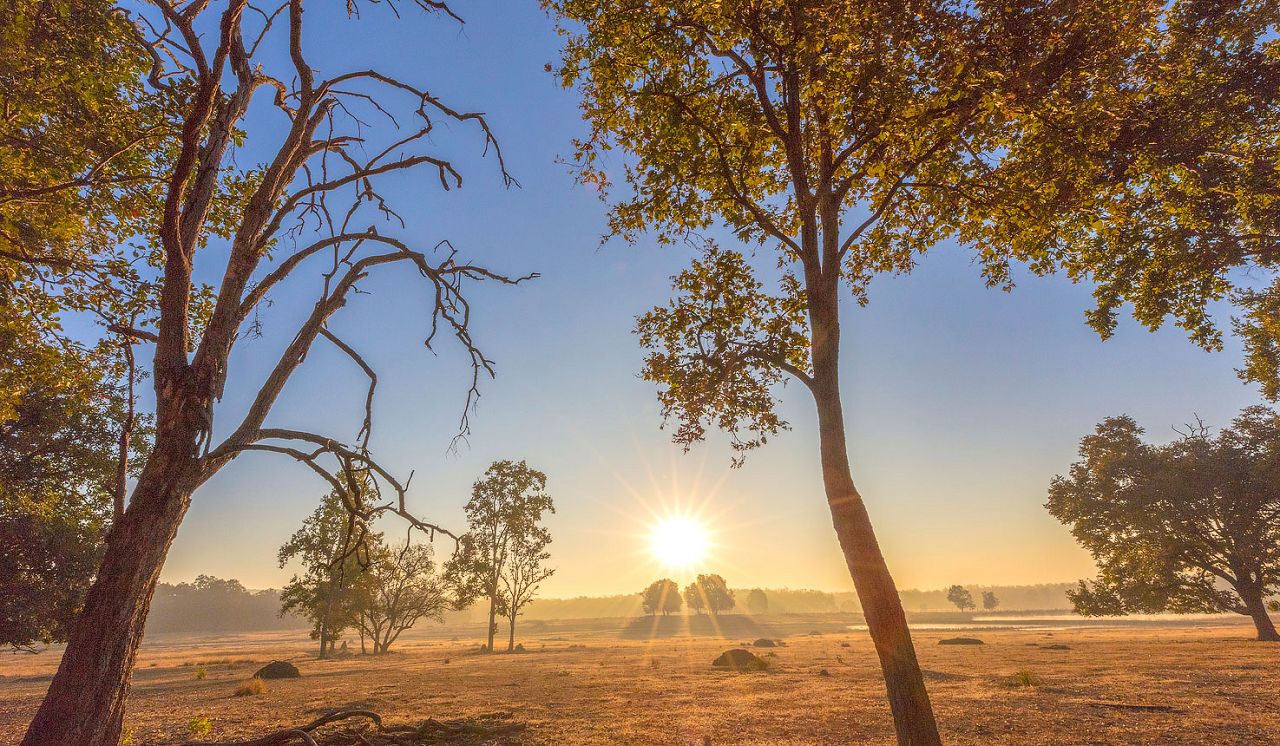
Gallery
Map
The best time of year to visit the Kanha area is generally considered to be during Oct-Jun, although there are considerable climatic variations over that period.
During October the daytime temperatures usually rise to around 25C/77F, whilst the nighttime low temperatures hold up around 12C/54F. However the rainfall is much lower, dropping to around 50mm (2”) per month. Sunshine is around 8 hours per day (around 75% of daylight hours), meaning that skies are usually clear. At this time of the year the national park is lush and green, with water-filled streams. The green backgrounds provide great contrast for wildlife photography, but the long-grasses can be a major impediment to actually finding the animals.
During Nov-Jan the daytime temperatures usually rise to around 25C/77F, whilst the nighttime low temperatures plunge to around -3C/27F. There should be very little rainfall. Sunshine is around 8 hours per day (around 80% of daylight hours), meaning that skies are usually clear. At this time of the year the national park is still relatively lush and green, with enough humidity in the air for great polarised photography. However, the long-grasses can remain a significant impediment to actually finding the animals. Obviously the morning safaris can be very cold and you should bring suitable clothing.
During Feb-Mar the daytime temperatures can climb steeply to around 34C/93F, whilst the nighttime low temperatures manage to drop to a comfortable 12C/54F. There should be very little rainfall. Sunshine is around 9 hours per day (around 75% of daylight hours), meaning that skies are usually clear. At this time of the year the national park is still surprisingly lush, although the grasses should have died back sufficiently to make wildlife viewing a little easier. However there should still be lots of flowers and fresh leaves around, with beautiful fragrances in the air.
During Apr-Jun the daytime temperatures can climb very steeply to around 42C/108F, whilst the nighttime low temperatures manage to drop to a reasonably comfortable 18C/64F. There should be very little rainfall up to June, when there can be 100mm (4”) over the course of the month. Sunshine is around 9 hours per day (around 70% of daylight hours), meaning that skies are usually clear, but this drops in June to 6 hours per day (45% of daylight hours) as the monsoon clouds gather. At this time of the year the national park is relatively dry, the long grasses should all have died back and the visibility for wildlife viewing should be really good. Additionally the animals tend to cluster around the few remaining water sources.
Clearly the temperatures are an issue, as is the increased number ofinsects, repellent is strongly recommended.
During Jul-Sep, the national park closes, usually mid-June to mid-October, due to the very high monsoon rainfall, which typically leaps to over 500mm (20”) per month. Naturally the lodges all tend to close as well, so visiting during this period is really not an option.
Getting there
The Kanha area can be accessed in a number of different ways…
By air
The closest airports and their most common connections are…
- Jabalpur : 100km to the north : Delhi, Agra
- Raipur : 150km to the southeast : Delhi, Mumbai, Kolkata, Hyderabad
- Nagpur : 200km to the southwest : Delhi, Mumbai, Pune, Kolkata, Bangalore, Doha
By train
The closest train stations and their most common connections are…
- Jabalpur : 100km to the north : Delhi
- Raipur : 150km to the southeast : Kolkata, Orissa
- Gondia Junction : 80km to the southwest : Mumbai, Pune
By road
The area is rarely reached by road, since the distances are so large. However, having arrived in this part of India, exploring by road is quite popular, often combining some or all of the main national parks of Bandhavgarh, Kanha, Pench and Satpura.
Where to stay
The reserve has three points of entry, Kisli Gate in the north, Mukki Gate in the south and Sarhi Gate in the northeast. There is a cluster of accommodation options outside the first two gates, with the latter being the slightly more remote and less busy. As yet there are no recommended accommodation options around the Sarhi Gate.
usually combined with nearby Bandhavgarh
let us know your thoughts about India
and we will help you create the perfect trip
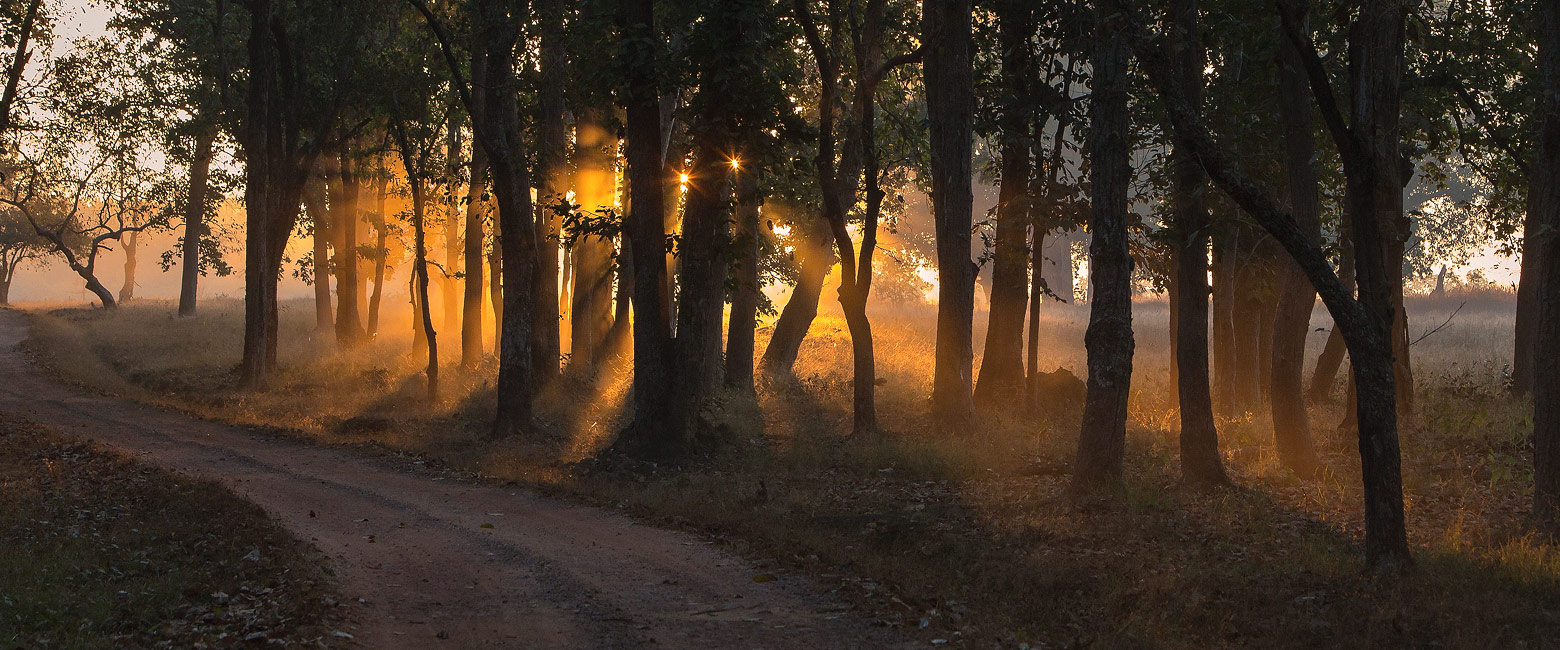
Extraordinary tailor-made adventures,
from earthy and edgy to easy and extravagant
From around USD 2500 per person, you set the ceiling
Sample Trips
Here are some of our popular trip shapes

Get started on your trip
It’s never too soon to get in touch, we are here to help with every stage of your planning.
Best Lodges
We regularly inspect and photograph all of the the best lodges, to ensure that we always recommend the most suitable options
Key Locations
Take a look around related locations. Click ‘View more’ to explore locations further afield.













